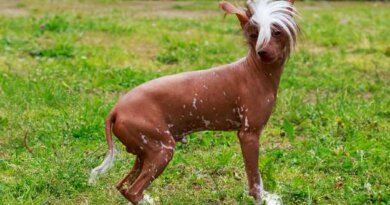For birds, siblinghood can get complicated : NPR
Wild birds have some of the most complicated sibling relationships around, with everything from murder to long-term alliances.
ARI SHAPIRO, HOST:
People can have brothers and sisters, and so can animals. In our series, The Science of Siblings, we’ve been investigating the impact of these relationships. And today we’re going to focus on birds. For some bird species, having a sibling can literally be a matter of life or death. NPR’s Nell Greenfieldboyce explains.
NELL GREENFIELDBOYCE, BYLINE: A few decades ago, David Anderson was working as a research assistant in the Galapagos Islands when he noticed something odd. As he did his job, he’d often pass by nests on the ground made by large white-and-black seabirds called boobies. He’d seen nests with two chicks inside – a big chick and a little chick.
DAVID ANDERSON: And then the little one disappears, always. And I would frequently find it, like, a half meter, a meter away from the nest site, just dead on the ground.
GREENFIELDBOYCE: He decided to study this. And what he learned is that female boobies lay two eggs several days apart. The first egg hatches, and that chick starts to grow. Then, days later, the second egg hatches. Anderson says the older, bigger chick will invariably turn on its newly hatched sibling.
ANDERSON: The big chick will suddenly start pushing on the little chick – kind of out of nowhere.
GREENFIELDBOYCE: The big chick pushes and pushes with all its might until the younger chick is out of the nest.
ANDERSON: And all this happens in about two minutes. So if you’re not there during those two minutes, you don’t see it.
GREENFIELDBOYCE: He’s seen this over and over again. He’s with Wake Forest University and has spent years researching these birds. What he’s learned is that the second egg is laid as a kind of insurance policy, which this species really needs because, for some reason, it’s terrible at hatching eggs.
ANDERSON: They can only hatch about 60% of their first eggs, which is appallingly bad.
GREENFIELDBOYCE: So they lay the second egg as a backup. But if the first one hatches successfully, the backup isn’t needed. And since it’s too much work to feed a second hungry mouth, nature, in the form of the older sibling, kills it off. Anderson says this kind of violence is unusual in the bird world. Birds are more likely to just jostle their nestmates as they beg for food.
ANDERSON: It’s common for sibling competition to happen in a nest of bird babies. It is relatively rare for them to actually attack each other.
GREENFIELDBOYCE: Clearly, sibling relationships can be deadly serious, but that’s also true for some other bird species – ones that will often help their siblings, even if doing so means taking enormous risks. Consider acorn woodpeckers. These birds live in oak trees along the West Coast. Ecologist Natasha Hagemeyer says it’s common for siblings to live in a cooperative group. They share mates and child care duties.
NATASHA HAGEMEYER: So you may have, for instance, a pair of brothers who then form a group with, like, a mother and her two daughters, and then they will nest together in the same nest and raise all their offspring together.
GREENFIELDBOYCE: She remembers one particular group of five sisters. They repeatedly teamed up to win new territories for each other by fighting other birds. These fights can be brutal.
HAGEMEYER: They involve birds chasing each other, screaming, displaying and also grappling midair to the point where sometimes they will hit the ground and still be fighting. I’ve seen birds get killed during these fights, so it is very risky.
GREENFIELDBOYCE: But as a united front, the five sisters were unstoppable. In the end, every one of them got a new territory where she could start breeding, creating new sets of siblings that might someday help each other to survive.
Nell Greenfieldboyce, NPR News.
(SOUNDBITE OF MOODS, YASPER AND PHILANTHROPE’S “BUCKET LIST”)
SHAPIRO: And for more stories in this series, visit npr.org/siblings.
(SOUNDBITE OF MOODS, YASPER AND PHILANTHROPE’S “BUCKET LIST”)
Copyright © 2024 NPR. All rights reserved. Visit our website terms of use and permissions pages at www.npr.org for further information.
NPR transcripts are created on a rush deadline by an NPR contractor. This text may not be in its final form and may be updated or revised in the future. Accuracy and availability may vary. The authoritative record of NPR’s programming is the audio record.




